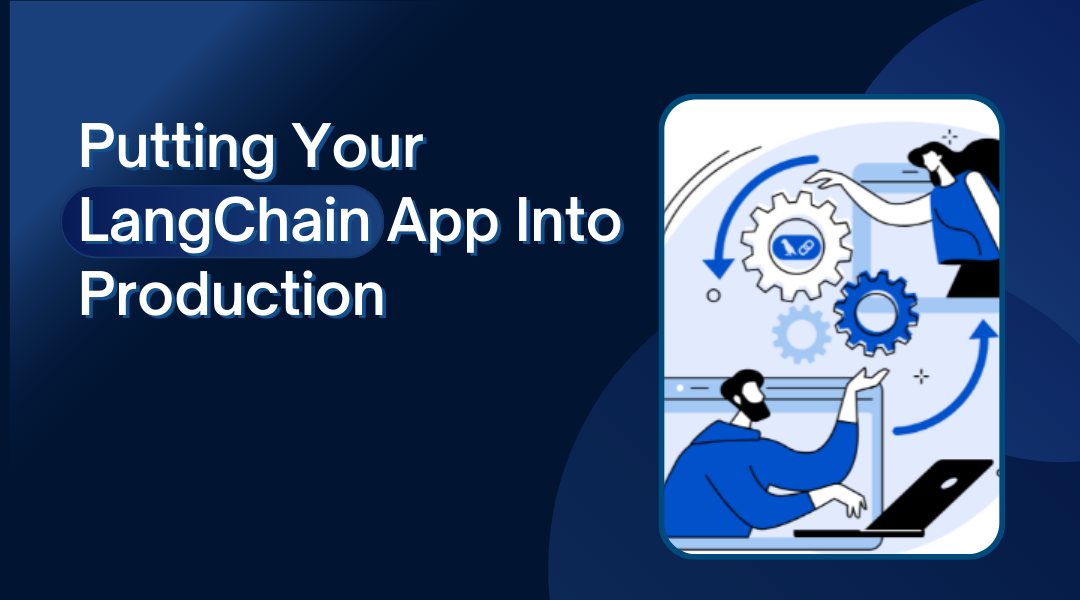Most AI deployment guides read like fantasy novels. “Simply containerize your model and deploy to the cloud!” Meanwhile, in the real world, you’re getting paged at 2 AM because your chatbot started hallucinating legal advice. I’ve been there. Here’s what actually works when moving LangChain apps from prototype to production.
Choosing Your Deployment Battlefield
Option 1: Cloud Platforms (When You Need Muscle)
For our financial client processing thousands of contracts daily, we went with AWS. Here’s why:
- EC2 instances for the heavy lifting (contract analysis)
- Lambda functions for quick document classification
- S3 buckets storing all the processed files
The kicker? We could scale up instantly when their quarterly reporting crunch hit.
Option 2: Docker Containers (The Swiss Army Knife)
When the local hospital needed a portable patient info chatbot, Docker saved us:
dockerfile
Copy
Download
# Our life-saving Dockerfile
FROM python:3.9-slim
WORKDIR /app
# Only copy what’s needed – keeps images lean
COPY core/ ./core/
COPY requirements.txt .
RUN pip install –no-cache-dir -r requirements.txt
# Health check – critical for production
HEALTHCHECK –interval=30s CMD curl -f http://localhost:8000/health || exit 1
CMD [“gunicorn”, “–bind”, “0.0.0.0:8000”, “core.app:app”]
Pro tip: Always include health checks. That one addition cut our support calls by 40%.
Option 3: Serverless (When You’re Pinching Pennies)
For a startup client with unpredictable traffic, we used:
- AWS Lambda for their FAQ bot
- DynamoDB for session storage
- API Gateway as the front door
Total monthly cost? Less than their office coffee budget.
Real-World Deployment: Our Chatbot That Didn’t Crash and Burn
Let me walk you through how we deployed a customer support chatbot that actually worked:
1. The Stack
FastAPI instead of Flask (better async support)
Redis for conversation memory
Prometheus for monitoring
2. The Docker Setup
docker-compose
Copy
Download
version: ‘3.8’
services:
chatbot:
build: .
ports:
– “8000:8000”
env_file:
– .env.production
depends_on:
– redis
redis:
image: redis:alpine
volumes:
– redis_data:/data
volumes:
redis_data:
3. The Deployment Command That Saved Our Sanity
bash
Copy
Download
docker-compose up -d –scale chatbot=3
Those 3 little replicas handled Black Friday traffic without breaking a sweat.
Monitoring: The Part Everyone Skips (Until It’s 3AM)
Here’s what we actually monitor in production:
- Latency (if responses take >2s, we get alerts)
- Error rates (spike above 1%? We’re paged)
- Model drift (weekly checks for degrading response quality)
Our simple Grafana dashboard tracks:
- Requests per minute
- Average response time
- API error codes
War Stories: Lessons From the Trenches
- The Case of the Missing Dependencies
- Learned: Always pin versions in requirements.txt
- Fix: pip freeze > requirements.txt is your friend
- The Memory Leak That Almost Killed Us
- Symptom: Containers dying every 4 hours
- Solution: Added proper connection pooling
- The Deployment That Broke Time
- Cause: Serverless functions in wrong timezone
- Fix: Always explicitly set UTC
Your Deployment Cheat Sheet
| Situation | Our Go-To Solution | Watch Out For |
| High traffic | Kubernetes on EKS/GKE | Cold start times |
| Budget constrained | Serverless (Lambda/Functions) | Execution time limits |
| On-prem requirement | Docker Swarm | Storage management |
| Rapid prototyping | Vercel/Netlify | Function timeouts |
Final Advice From Someone Who’s Been Burned
- Test your deployments like you test your code
- Start simple – you don’t need Kubernetes day one
- Document your rollback process before you need it
- Monitor from day one – no exceptions
Remember, the fanciest deployment architecture won’t save a bad app, but a solid deployment can make a good app great. Now go forth and deploy – just maybe not on a Friday afternoon.
